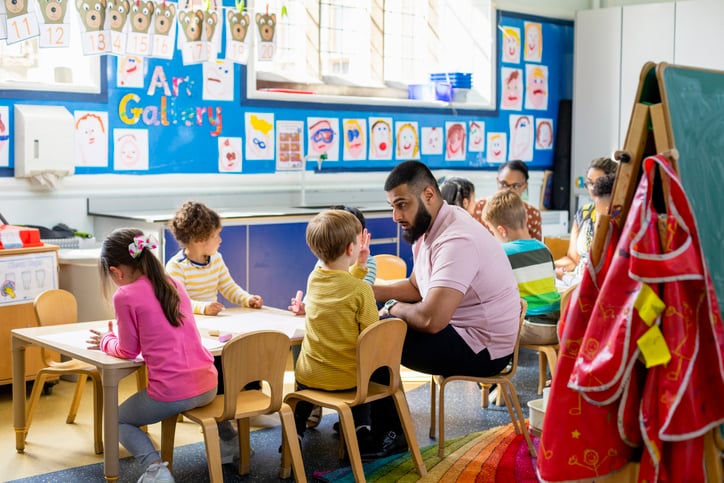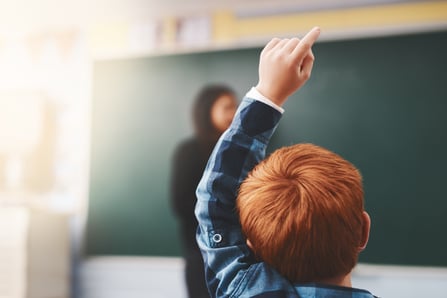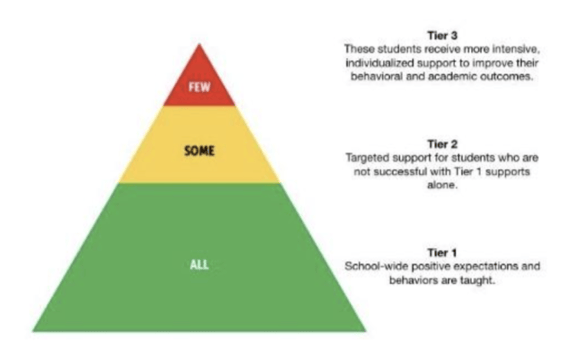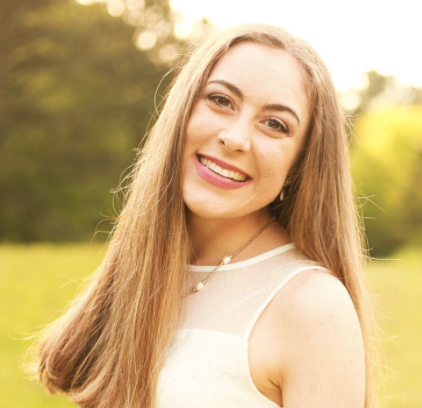Positive Behavioral Interventions and Supports (PBIS) for Autism
What It Is and Why It Is Important for Students With Autism
Positive Behavioral Interventions and Supports (PBIS) is really about implementing a new kind of school-wide culture. Positive behavior strategies and social-emotional learning (SEL) are becoming more common in schools across the country as we increasingly realize that we need to look beyond punishment and learn to provide support in order to help our students develop the skills needed to thrive in school and in the world. Encouraging personal accountability rather than just a culture of punishment has been proven to be much more effective in improving student behavior.
When a student is struggling in school there are often a number of factors that are coming into play. Simply punishing the student does not address the root causes of the behavior. PBIS can help students and school staff develop life skills that will help them overcome challenges and be more successful. When PBIS is embedded in school culture for a significant period of time it can greatly improve school climate.
The focus of PBIS is primarily on school-wide interventions to support the learning needs of all students, including those with neurodiversities like autism. When expectations are communicated clearly and directly to all learners involved within an educational setting, goals for school-wide success can be stated and reinforced in a manner that is consistent with an environment focused on growth and individual achievement for each student.

Guiding principles and goals of PBIS include:
- Creating a process for tracking the behavioral progress of each student, and the school body collectively, over time1
- Establishing expectations for the learning and inclusion of all students
- Recognizing that the academic and social needs of each child vary and, therefore, outcomes for success should be individually tailored
- Encouraging staff and school volunteers to embrace PBIS interventions consistently throughout the school as a whole
- Collecting school-wide data on the success of PBIS strategies to support the continuation or discontinuation of interventions and to tweak approaches going forward
- Promoting academic and social success for each student in every educational context
- Developing early intervention practices to support the needs of the entire student body
- Providing opportunities for explicit instruction and specific feedback during socialization and group learning times
- Setting rewards and determining consequences for adhering, or failing to adhere, to PBIS guidelines and interventions
Importantly, PBIS strategies take place throughout the day in each setting of the academic environment, such as on the bus, in physical education class, during lunch, and while on the playground.1
Behavior is viewed as a form of communication where positive behaviors can be used to replace behaviors that are targeted to be decreased. To illustrate, rather than throwing a pencil in class to get the teacher’s attention, students learn to raise their hands when they have a question according to school-wide PBIS instruction. The action of raising one’s hand is reinforced by receiving help from the teacher, and pencil-throwing behavior is placed on extinction (i.e. the action is no longer reinforced in any setting throughout the school) by instructors ceasing to provide attention for pencil throwing.
Examples of PBIS in School Settings
PBIS interventions in a school setting may consist of the following:
- Establishing a consistent routine2
- Streamlining an approach for achieving breaks throughout the school day
 Developing a method for hand-raising during class when assistance is needed, walking quietly in hallways throughout the school, lowering one’s voice when in the library, etc.
Developing a method for hand-raising during class when assistance is needed, walking quietly in hallways throughout the school, lowering one’s voice when in the library, etc. - Providing examples of behavior that is, and is not, acceptable within school contexts
- Designing a school-wide reward system, for example, providing access to a school store with rewards that can be earned by adhering to PBIS guidelines and receiving school coins as currency
- Promoting a process for incorporating silent signals throughout the school, such as having green, yellow, and red signals to indicate when it is and is not appropriate to speak loudly in various contexts, areas, and locations
- Creating clear-cut expectations for classroom and school-wide behavior
- Staying on task and incorporating “if-then” statements for student behavior, for example, if the class finishes their sheet of math problems on time, then recess will be earned.2
- Stating the positive behaviors that instructors desire to see throughout the school such as walking quietly, using calm voices, and respecting other students and staff members
It is important to adhere to a method of gentle, peaceful, and consistent corrections when behavioral expectations are not achieved or when the parameters for classroom behavior are broken by a student or group of students. When rule violations occur, instructors should speak directly with the student(s) involved about which guideline or school policy was broken. Specific direction and instruction should be provided on how to improve going forward, and response cost procedures, such as taking away a reward or removing earned school currency, can be implemented for students who consistently fail to meet school-wide expectations for their behavior and conduct. Similarly, positive replacement behaviors that serve the same function as the behavior targeted for decrease should be emphasized as well.
Adhering to pre-established response cost procedures is essential to the success of PBIS approaches. Such interventions cause the student or group of students to lose access to a predetermined amount of a reward or reinforcer for breaking a school rule, guideline, or policy. Examples of rewards that can be lost may include access to preferred activities, items, prizes, and earned school currency or coins. School personnel should promptly correct and redirect any behavior that is not consistent with PBIS expectations and protocols.
The Three PBIS Tiers
There are three primary tiers when considering PBIS interventions, practices, strategies, and goals:3

Tier 3: Individual
Tier 2: Targeted
Tier 1: Universal
Tier 1
Tier 1 focuses on school-wide interventions, rules, and guidelines for all students. Examples that fall under this category include school-wide hall policies such as walking quietly and calmly in the hallways, using a low voice when in the school library, remaining seated while in the lunchroom, flushing toilets in the bathroom, and respecting others by taking turns during recess.4 This tier applies to the entire student body meaning that the policies and practices are intended for 100% of the students in attendance.
Tier 2
Tier 2 emphasizes additional policies, practices, and interventions for students who need further guidance and direction. Support in this tier may include the following: evidence-based practices, interventions, and assistance for groups of students who can benefit from supplemental instruction. This tier typically includes about 5 to 15% of the entire student body and can encompass practices such as self-monitoring, scheduling breaks, training peer mentors, and encouraging strategies for stress management and conflict resolution.5 Developing individualized daily schedules with visual reminders is another helpful practice that is commonly used in this tier–especially with individuals on the autism spectrum.
Tier 3
Tier 3 is intended for 3-5% of the total students in a school body, and strategies in this tier support learners who require intensive and individualized services.6 One-on-one paraprofessionals and other school staff are trained to implement protocols, strategies, and interventions designed to strengthen participation in school-wide activities with other students (while incorporating modifications and accommodations as needed). An example of an intervention that would fall under this tier is providing noise-canceling headphones for a student with autism (who becomes easily overstimulated by loud noises) to wear during large group assemblies. The paraprofessional or support person for the student would provide access to the accommodation (i.e., the headphones) during group activities to provide a way for the learner to still participate in large gatherings with this slight modification in place to make it more manageable sensory-wise.

In Summary
Positive Behavioral Interventions and Supports seek to increase socially appropriate behavior throughout an entire school body by providing consistent guidelines for all leaders, staff members, and instructors to follow. While the first tier of PBIS interventions is intended for all students, the second and third tiers are reserved for learners requiring additional support.
Consistency is key when implementing school-wide PBIS interventions, and school personnel should be adequately informed of the rules, policies, and expectations for student behavior. Strategies for correcting behavior that is inconsistent with PBIS guidelines should be clearly and directly stated to each member of staff with the school from the outset.
Check out our free downloadable list of ways to tailor PBIS for autism!
What has been your experience with PBIS? We’d love to hear from you! Please leave us a comment at the end of this post.
References
- https://edgemont.mvusd.net/apps/pages/index.jsp?uREC_ID=793636&type=d&pREC_ID=2013436
- https://www.kickboardforschools.com/pbis-positive-behavior-interventions-supports/9-examples-of-positive-behavior-support-interventions/
- https://www.pbis.org/topics/school-wide
- https://blog.brookespublishing.com/7-steps-to-successful-schoolwide-positive-behavior-support/
- https://www.pbisworld.com/tier-2/
- https://www.pbis.org/topics/classroom-pbis
- https://lexingtonservices.com/using-the-pbis-framework-to-improve-behavior-in-autism-schools/ (note: referenced in handout above)

Kenna McEvoy
Kenna has a background working with children on the autism spectrum and enjoys supporting, encouraging, and motivating others to reach their full potential. She holds a bachelor's degree with graduate-level coursework in applied behavior analysis and autism spectrum disorders. During her experience as a direct therapist for children on the autism spectrum, she developed a passion for advocating for the health and well-being of those she serves in the areas of behavior change, parenting, education, and medical/mental health.




